Specifications and features
With much of the attention on developing full-frame models, Nikon has been slow to address the need for a small APS-C crop camera for semi-professional use. However, some eight years after it introduced the 12-Mpix D300s, Nikon has finally unveiled its successor, the D500. Like its predecessor, it adopts a durable metal casing; however, the D500 is the first APS-C crop camera from Nikon to break away from convention by not including a built-in flash (typically found over the pentaprism).
The new camera also eschews the expected 24-Mpix sensor found in all of the latest Nikon DX DSLRs in favor of a lower-resolution, 20.9-Mpix model, with which it boasts capture rates of up to 10 fps in RAW (14-bit lossless) for 200 shots with AE/AF enabled. In addition, the D500 has a 153-point AF system with 55 selectable points that almost covers the entire width of the frame. At the rear, the D500 has a 3.2-inch 2.54m-dot tilting touchscreen LCD monitor that’s useful for both stills and video. The latter is a highlight on the D500, offering 4K UHD at 24/25 and 30p — albeit with an additional crop (2.25x equivalent), and limited to clips not exceeding three minutes. Although a crop body, the new Nikon measures 5.5 x 4.1 x 3.1” / 139 x 105.2 x 78.5mm and weighs 1.61 lb / 730g, body only (with battery and card). The D500 is available now at a body-only price of $1,999 (USD).
- 20.2-Mpix APS-C CMOS sensor
- Expeed 5 image processor
- 3.2” 2.54m-dot tilting touchscreen LCD monitor
- 4K UHD video at up to 30 fps
- Multi-CAM 20K 153-point AF system
- Native ISO up to 51200, ISO 1,640,000 with expansion
- 10 fps shooting in RAW for 200 shots with AE/AF
- 180k-pixel RGB metering and group area AF sensor
- Built-in WiFi, Bluetooth with NFC
Measurements: Excellent high ISO dynamic range
Nikon’s new sensor in the D500 achieved an overall DxOMark score of 83 points, a somewhat lower score than expected and when compared with other, higher-resolution sensors found in the D5500 and D7200. But like the D5, it looks as if some sensor resolution was traded for improved DR at high ISOs, along with faster readout. Color depth, dynamic range and low-light ISO measurements are all excellent, but just not quite at the same level as the more pedestrian offerings.
Nikon D500 vs. Nikon D7200 vs. Nikon D300s: Well-balanced performance
Looking at the sensor measurements of the aging D300s against the D500 model, it’s quite obvious that anyone trading up from the former will see some significant bumps in sensor performance.
The lower noise floor of the D500’s sensor brings increased color depth for more nuanced color, a wider dynamic range — not just at base, but at every ISO setting, and close to two-thirds of a stop improvement in our low-light ISO comparison. The new Nikon sensor doesn’t quite match the still-current 24-Mpix D7200 in our performance tests, but it’s close (around -0.3EV when comparing overall scores).
The D7200 has a slightly wider dynamic range (+0.6EV) at base and at ISO200, but the D500 matches the D7200 at ISO400 and even improves on that model thereafter by around 0.5EV on average. At high ISOs in low light, the D500 doesn’t give anything up in noise, either, with the two models achieving similar levels.
Nikon D500 vs. Canon EOS 7D Mark II vs. Sony SLT Alpha 77 II: Excellent all-round performance
You can understand to a degree Nikon’s reluctance to introduce the D500 with the D7200 in the lineup, but models like the 20.2-Mpix Canon EOS 7D Mk II and 24.2-Mpix Sony SLT a77 II are highly regarded by sports and wildlife photographers for their durable build, capture rate, and buffer size.
So both models feature impressive specs, and the Canon lens range today is peerless, but the sensor in the 7D Mk II has the highest noise floor in this class, and at 11.8 EV, the dynamic range at base is a little underwhelming. Fortunately, the 7D Mk II can hold its own against the a77 II in low-light ISO, and both models are not that far behind the D500.
—Indeed, the new D500 sensor has only a small advantage, at just under a quarter stop. In terms of dynamic range, howver, the D500 is far superior at every ISO setting. Extended dynamic range isn’t everything in a camera: there are many other factors to consider when choosing a model, but it directly correlates with file quality and allows additional contrast control. In this instance, the D500’s extended dynamic range is not limited to base ISO, nor to low ISOs at which shadows can be opened up (resulting in photos with lower noise and improved color that favors landscape photographers), but also when shooting at high ISOs. Admittedly, at higher ISOs the advantage with color is eroded, but the exposure latitude is maintained. It’s a significant benefit for users — and not just during RAW conversion, but for out-of-camera JPEGs as well (the typical option for action photographers).
Conclusion
Detractors might cite the D500’s lower pixel count over the Nikon D7200 as a step backwards, however, the new 20.9-Mpix sensor has enabled a phenomenal 10 fps maximum capture rate along with a decent-size 200 RAW (14-bit lossless) frame buffer — one of the main weaknesses of the D7200. Sensor performance is a real highlight, with excellent dynamic range at both low and high ISOs, and with noise levels that are not only on par with the D7200, but lower than the two main rivals. As a camera for sports and wildlife, the Nikon D500 is a solid choice, and although it is one of the most expensive crop cameras on the market today, it is also one of the most capable.
The web reaction to no built-in flash seems to be « a big mistake »……


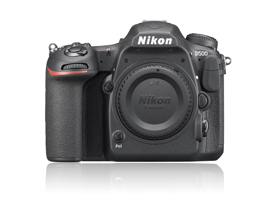



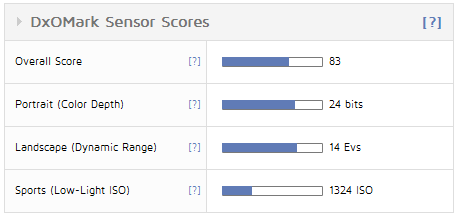
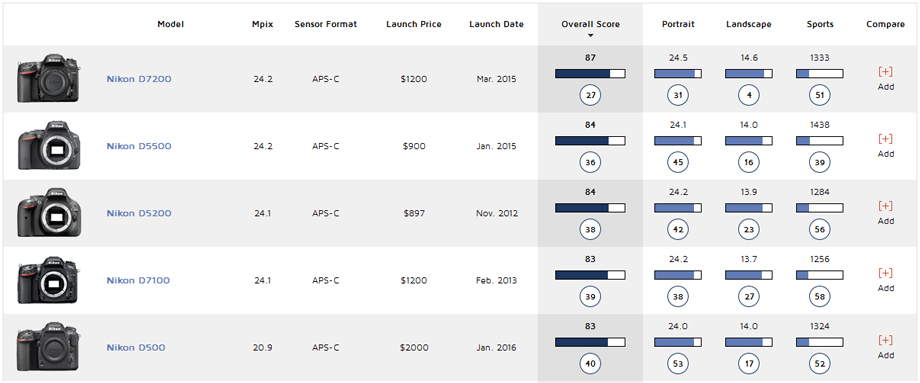

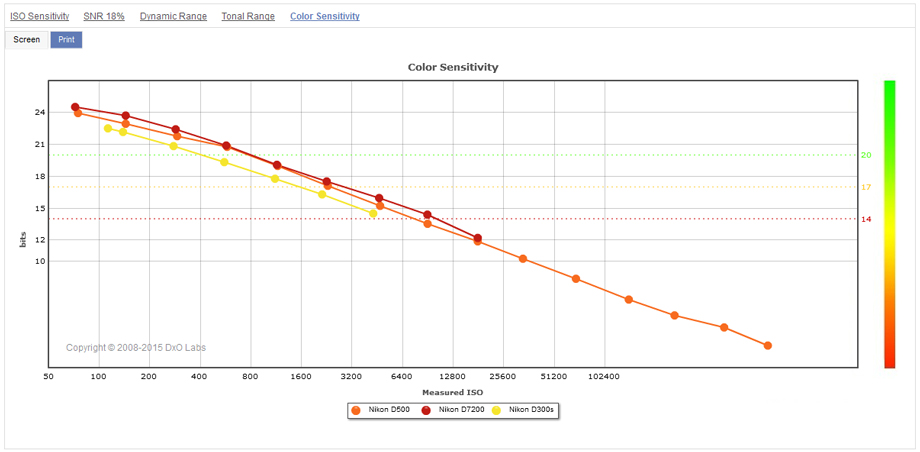
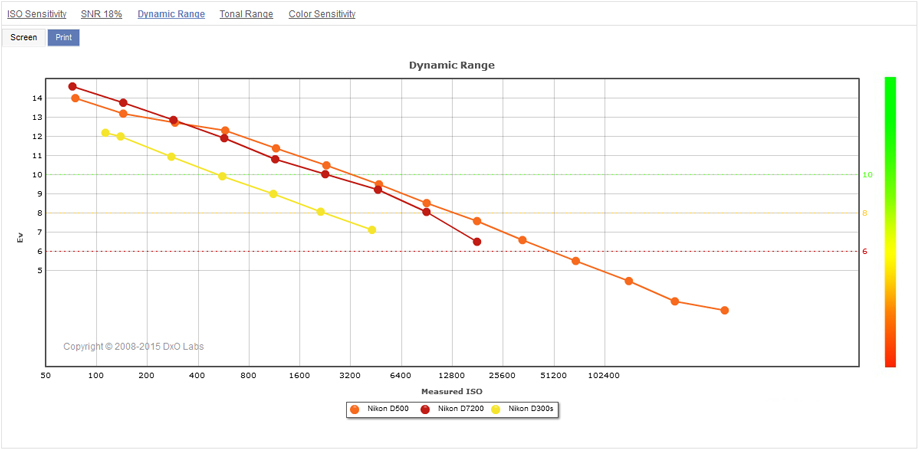
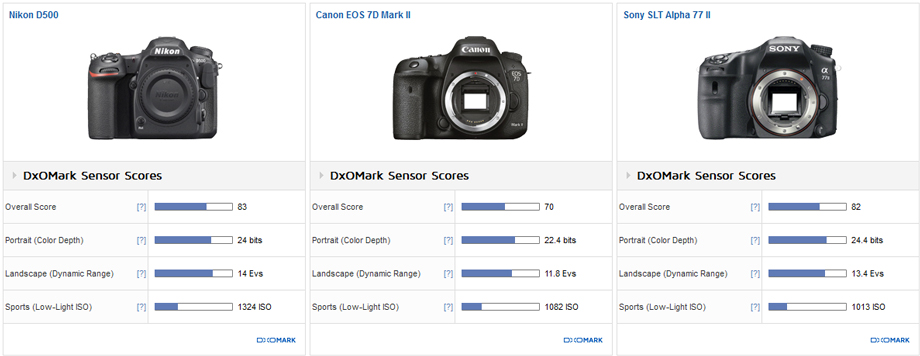
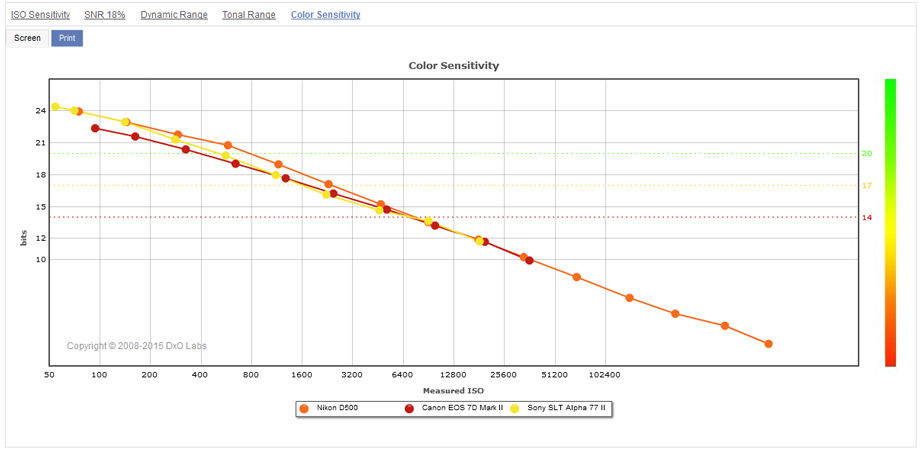
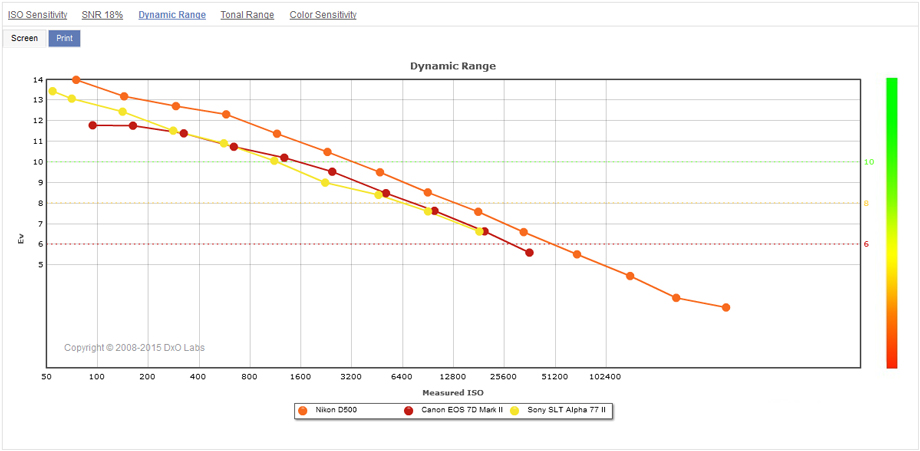
DXOMARK encourages its readers to share comments on the articles. To read or post comments, Disqus cookies are required. Change your Cookies Preferences and read more about our Comment Policy.